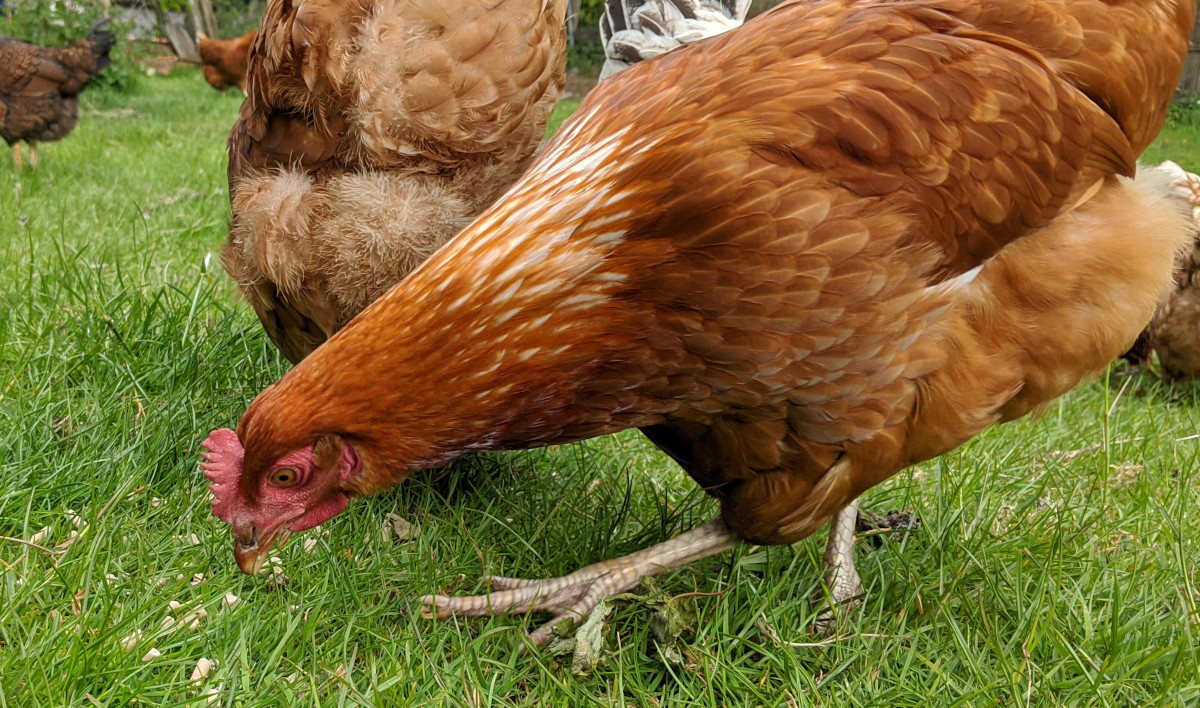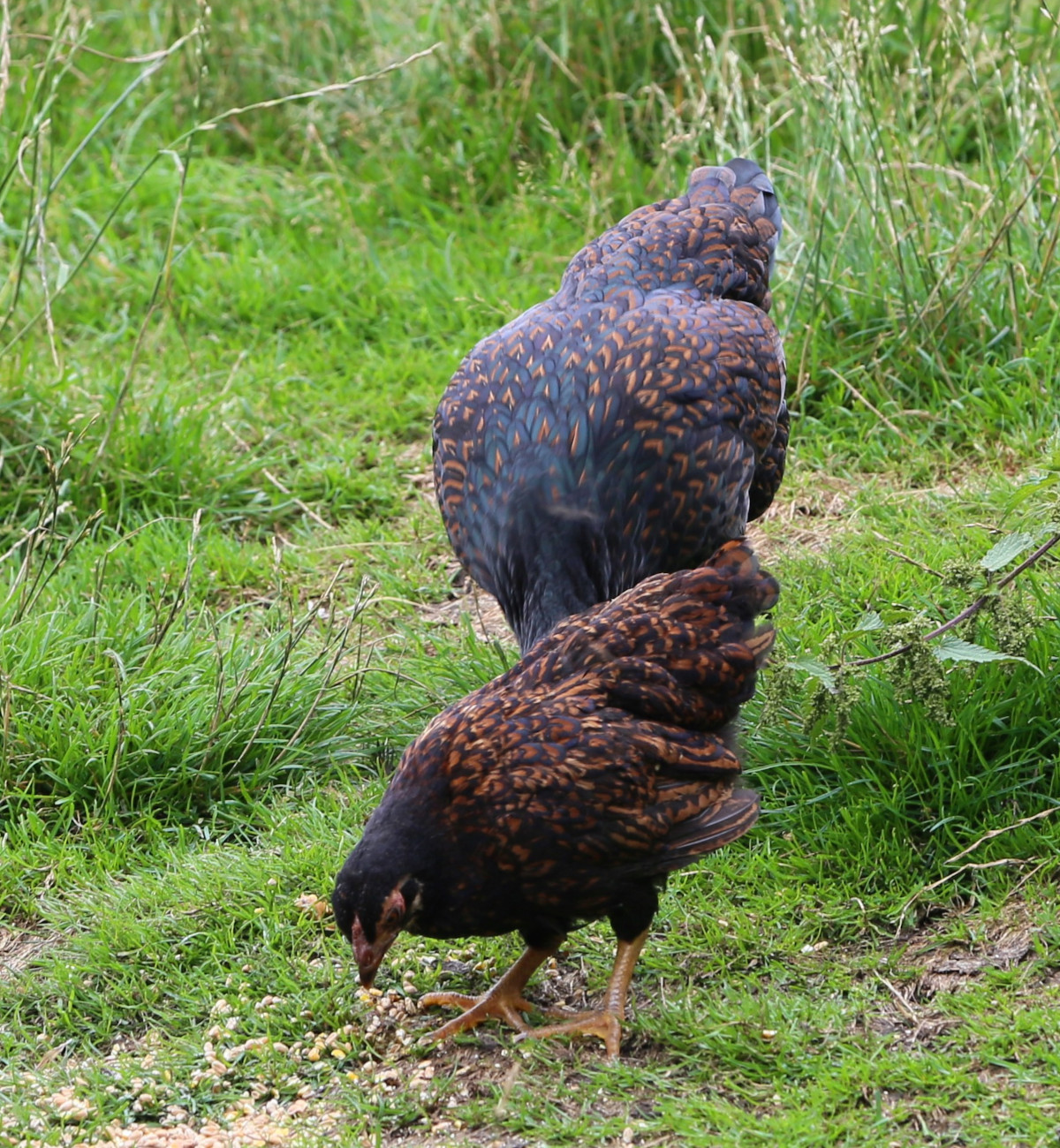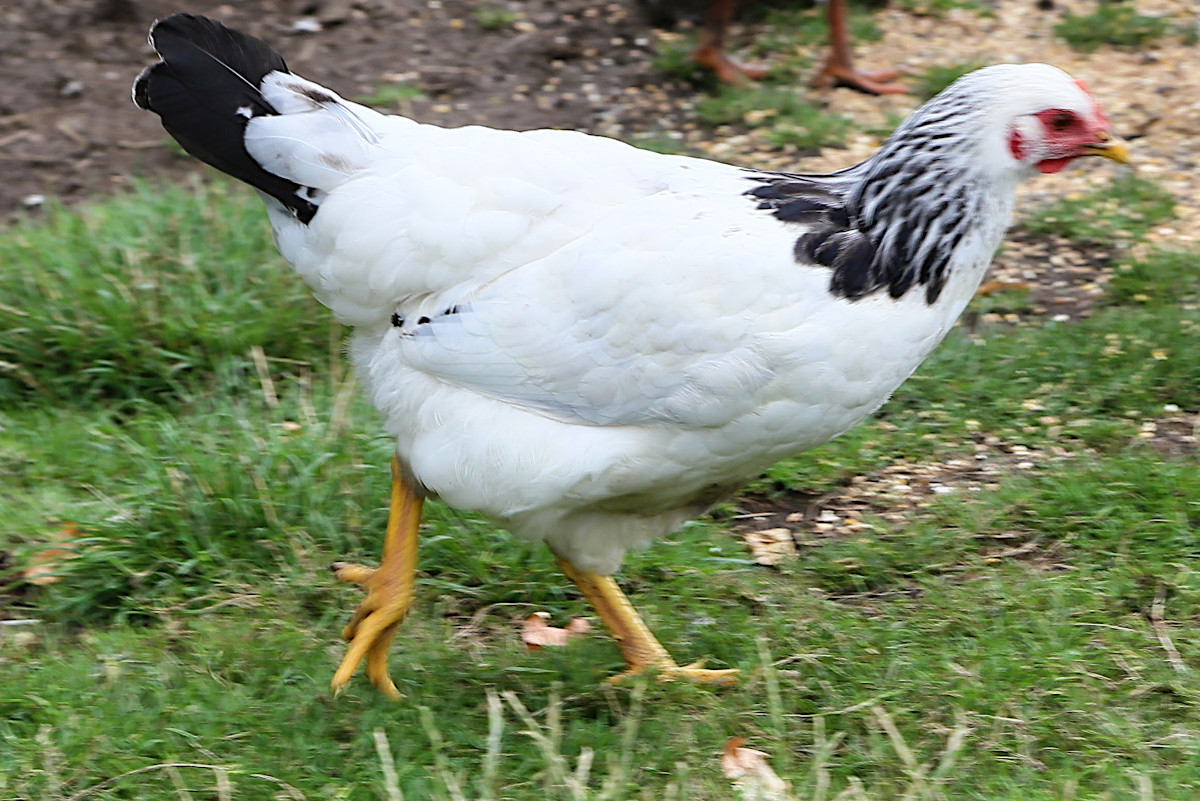When to switch chicken feeds. Going from chick ration to growers and on to layer pellets.

In the first 6 to 8 weeks of life, chicks grow extremely fast and the demand for protein to build muscle, bone and tissues is critical.
Table of Contents
By week 8, the growth curve of the chick has levelled some from it’s early exponential growth and a lower average protein is OK. A higher protein level is fine, but is not necessary.
Table of common chicken feeds and when to use them:
| Feed Type | When to feed | Protein content | Sample Ingredients |
|---|---|---|---|
| Starter Feed | Day 1 to week 6. | 22 to 24% protein | Corn, soybean, canola or sunflower meal, wheat, sorghum, fish meal, vitamins and minerals. Some have added medications. |
| Grower Feed | Week 6 to week 18. | 18 to 20% protein | Corn, soybean, canola or sunflower meal, wheat, vitamins and minerals. May contain a mix of grains. |
| Layer Feed | Week 18 onwards. | 16 to 18% protein | Corn, soybean, canola or sunflower meal, wheat, calcium carbonate, vitamins and minerals. |
| Pasture | Day 1 onwards if you can. | 16 to 25% depending on season, conditions and grass variety. | Chickens on pasture have access to greens, insects and grit as well as fresh air, exercise, sunshine and the freedom to indulge in natural behaviours. Pasture is an excellent protein and calcium source. |
| Scratch Feed | From week 6 if soaked in water first. | 12% protein | Whole or cracked grains such as corn, wheat, oats or barley, sometimes mixed with seeds and dried fruits or vegetables. |
| Treats | From day 1 but never more than 5% of the diet. | Variable | A mix or selection of seeds, grains, vegetables, insects, fruits or peck blocks designed to enrich the environment. |
| Grit and shell | Grit from day 1 and shell from week 16. | none | Grit is crushed flint or granite an can be a variety of sizes and shell is pieces of oyster shell. |
| Scraps | From 12 weeks but never more than 5% of the diet. | Variable | The waste from human kitchens and tables, often consisting of vegetable and fruit peelings and seeds, table scraps and leftovers and food that is no longer fit for human consumption like stale bread. |
When to feed chick crumb:
Chick crumb is a type of feed that is specifically designed for baby chicks. It is high in protein and other nutrients that chicks need for healthy growth.
Chick crumb should be fed to chicks from the day they hatch until they are about 6 weeks old. After 6 weeks, chicks can be switched to a grower feed.
In the past I have used chick crumb up to 8 weeks of age for some of the slower maturing chicken breeds or smaller chicks like the true bantams.
Here are some tips for feeding chick crumb:
- Feed chick crumb ad libitum, which means that chicks should have access to as much feed as they want, whenever they want.
- Provide chick crumb in a feeder that is easy for chicks to access.
- Make sure the chick crumb is fresh and free of mould or other contaminants.
- Store the chick crumb in a cool, dry place.
- Separate chicks by age to ensure that all the young birds are getting the nutrients they need.
It is also fine for the hen that is brooding chicks to eat chick crumb, even the medicated types. She will benefit from the protein as she recovers from hatching and rearing a clutch.
Below: A mother hen calling her chick to feed.
When to feed growers ration:
Grower ration is a type of feed that is designed for chickens between the ages of 6 and 20 weeks.
It is a little lower in protein than chick starter feed, but higher in protein than layers ration. Grower ration helps chickens to grow and develop strong bones and muscles. It also contains nutrients that support egg production in hens.
You can start feeding grower ration to your chickens when they are about 6 weeks old. You can continue to feed grower ration until your chickens are about 20 weeks old, at which point you can switch them to layer feed. See below for how to transition from one type of chicken feed to another.
It is important to note that you should not feed grower ration to chickens that are younger than 6 weeks old. This is because grower ration contains different levels of nutrients to chick starter feed and you could end up stunting the growth of the young birds.
Below: Large, slow maturing heritage chickens like these Barnevelders can spend longer on chick crumb and growers ration before being switched to layers.

You should also avoid feeding grower ration to chickens that are older than 20 weeks old. This is because grower ration does not contain enough calcium for laying hens. Laying hens need a diet that is high in calcium in order to produce healthy eggs.
When to start with layers pellets:
You should start feeding layers pellets to your chickens when they start laying eggs, which is usually around 20 weeks of age. Layers pellets are specifically designed for laying hens and contain the nutrients that they need to produce healthy eggs.
I wait till the first egg is laid before I switch to layers feed.The earliest you should ever consider beginning to switch to layers feed is 18 weeks.
The growing chick’s body needs more protein than a layer feed provides. Too little protein early on and your bird will be set up for sub optimal health and productivity throughout its life.
Below: This Light Sussex grower is still too young for layers pellets.

I raise a lot of heritage and slower maturing breeds of chicken that don't come into lay until they are 30 weeks old and it is fine to continue feeding growers ration until this age.
Layers pellets are typically higher in calcium than other types of feed, as calcium is essential for strong eggshells. They also contain other nutrients that are important for egg production, such as protein, vitamins, and minerals.
Layers ration should make up at least 90% of the diet of a laying hen.
You can feed layers pellets to your chickens ad libitum, which means that they should have access to as much feed as they want, whenever they want, or you can mix it with other feeds like grains and scratch.
It is important to monitor your chickens' weight and adjust the amount of feed you give them accordingly. Chickens that are overweight or obese are more likely to develop health problems, such as heart disease and arthritis.
How to switch your chicken feed as the birds get older:
It is not a good idea to switch your chickens feed abruptly, ideally it should be done gradually with ever increasing amounts of the new feed over the course of 10 days.
The best way to change a chicken's feed is to do it gradually over a period of 7-10 days. This will help to prevent digestive upset and other health problems.
To do this, start by mixing 90% of the old feed with 10% of the new feed. Then, each day, increase the amount of new feed by 10% until you are feeding 100% of the new feed.
It is important to keep an eye on your chickens during this time to make sure they are eating and drinking normally. If you notice any changes in their behaviour or health stop the feed change and consult with your veterinarian.
Here are some additional tips for changing your chicken's feed:
- Make sure the new feed is appropriate for your chicken's age, breed, and activity level.
- If you are switching from a medicated feed to an unmedicated feed, be sure to do so gradually over a period of 2 weeks.
- If you are switching from a pelleted feed to a crumble feed, or vice versa, be sure to do so gradually over a period of 1 week.
- Provide your chickens with plenty of fresh water at all times, especially during a feed change.
- If you have any questions or concerns about changing your chicken's feed, be sure to consult with your veterinarian.
Can you switch straight to layer feed from chick crumb or do you have to feed growers?
The problem with this abrupt change in the feeding of your chickens to the lower protein feed and the different nutrients can check the progress of the chicken and delay the onset of laying by as much as three weeks.
The second consideration for switching a chicken to layer feed so young is the calcium content. Layer rations have extra calcium added to keep up with the hen’s bodily demands for producing an egg shell every day and growing birds need no where near this much calcium.
Too much calcium will have detrimental effects on both bone and muscle, and, in fact, can become toxic to young birds over time.
